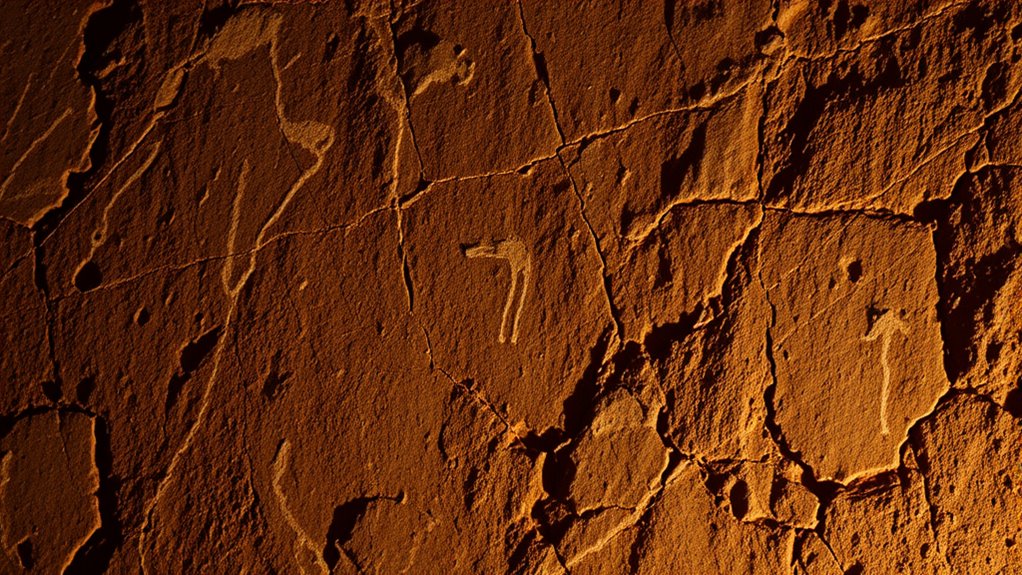Ancient pigments reveal how early humans created their oldest cave art using natural materials like minerals, charcoal, and plant extracts. They ground these materials and mixed them with binders such as water or fat, developing techniques like blowing pigment through hollow bones or using animal hair brushes. These methods allowed the artwork to endure for thousands of years. Keep exploring to discover how these discoveries offer fascinating insights into prehistoric creativity and technological innovation.
Key Takeaways
- Analysis of ancient pigments uncovers early techniques like blowing pigment through hollow bones and using brushes made from animal hair.
- Chemical composition studies reveal mineral sources such as ochre and charcoal, indicating specific sourcing methods.
- The durability of natural pigments allowed ancient artists to develop long-lasting techniques for cave paintings.
- Sourcing pigments from local minerals and plants reflects early resourcefulness and understanding of material properties.
- Technological advancements in pigment analysis have helped identify the oldest known cave art creation methods.
The Discovery of Ancient Pigments
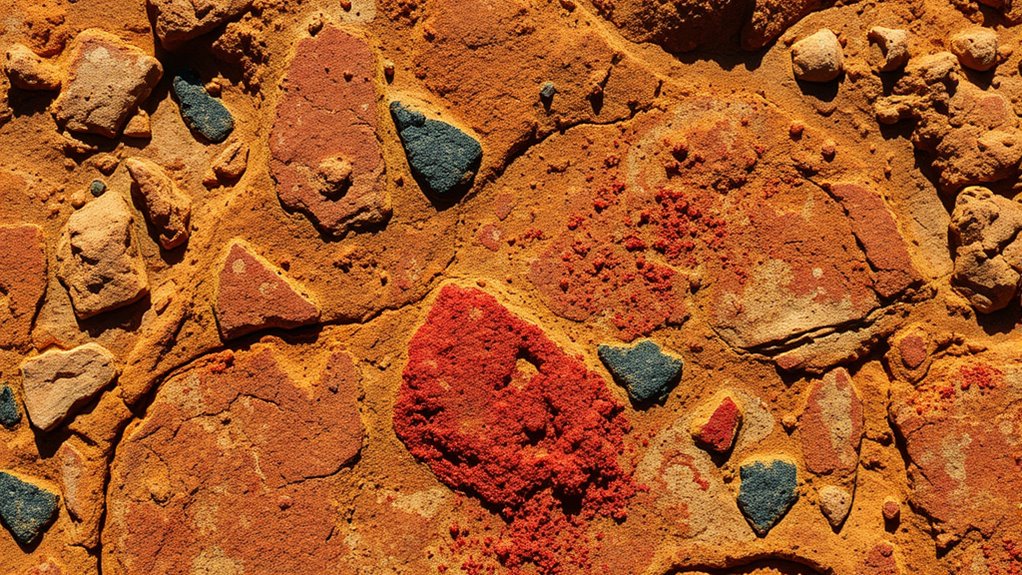
The discovery of ancient pigments has revolutionized our understanding of early human creativity and technological innovation. When you explore these pigments, you uncover more than just color; you see prehistoric symbolism woven into their use. Researchers have traced pigment sourcing to specific locations, revealing trade routes and resourcefulness of ancient peoples. These pigments, often made from minerals, charcoal, or plant extracts, served as tools for communication and cultural expression. They highlight how early humans selected materials with purpose, transforming raw resources into meaningful symbols. Additionally, analyzing these pigments offers insights into the material composition of early art supplies, shedding light on technological advancements of prehistoric societies. By studying these pigments, you gain insights into their social and spiritual lives, recognizing that color was more than decoration — it was a language. This discovery reshapes how we interpret their artistic and symbolic capacity, connecting us to our ancestors’ ingenuity.
Materials and Techniques of Early Cave Artists
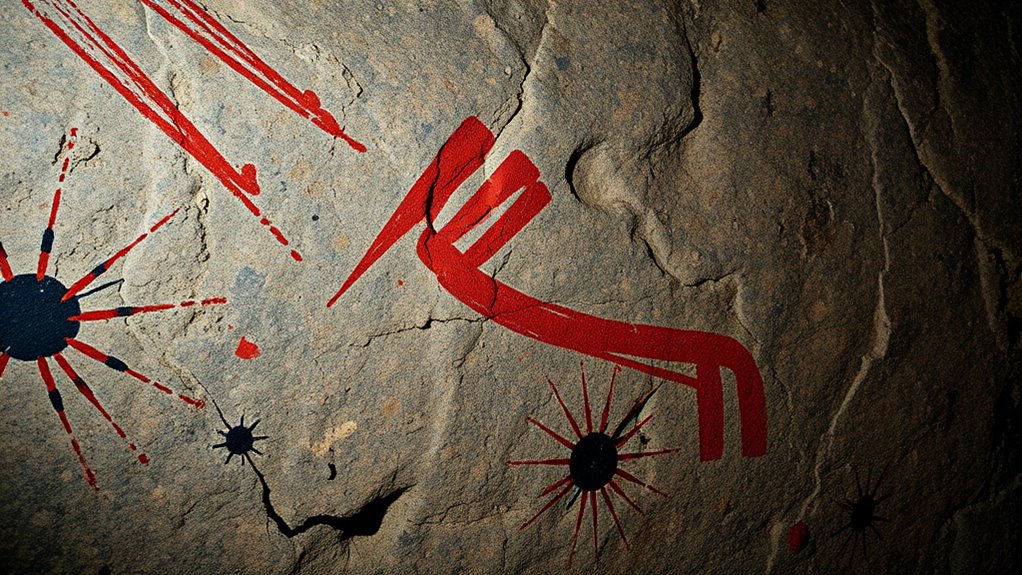
Ancient cave artists demonstrated remarkable ingenuity in their choice of materials and techniques to create lasting images on rock surfaces. They sourced pigments from natural materials like minerals, charcoal, and clay, carefully selecting colors that would endure over millennia. Pigment sourcing often involved grinding stones or charred bones into fine powders, which they then mixed with natural binders such as water, animal fat, or plant sap. Their techniques included blowing pigment through hollow bones to create spray effects or using brushes made from animal hair. Artistic symbolism played a vital role, as the colors and images conveyed spiritual or cultural meanings. The use of permanent pigments allowed their artwork to survive for thousands of years, offering us a glimpse into their world. By understanding these materials and methods, you gain insight into how early artists communicated complex ideas and beliefs through their enduring cave paintings.
Analyzing the Composition of Ancient Colors
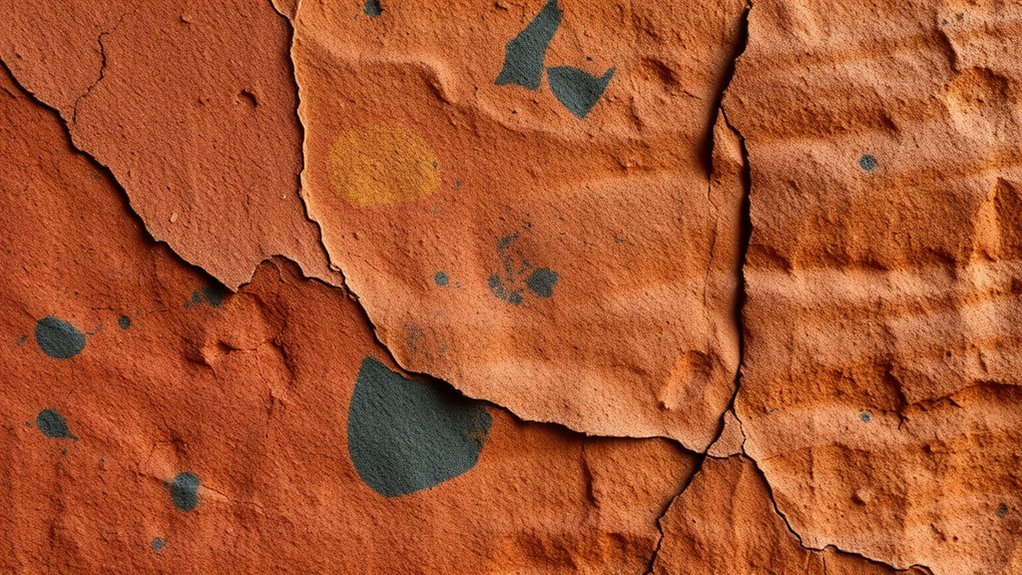
By analyzing the chemical composition of ancient colors, researchers can uncover valuable insights into the materials and methods used by early artists. Chemical analysis reveals the specific minerals and substances that formed the pigments, helping you understand their origins and techniques. Key points include:
- Identifying mineral sources like ochre, charcoal, and clay.
- Determining how natural pigments were processed and prepared.
- Tracing trade routes or resource availability based on mineral signatures.
- Understanding analytical techniques that allow scientists to detect subtle chemical differences in pigment samples.
This analytical approach helps you see the connection between the pigments’ composition and the environment, showing how early artists sourced and manipulated natural materials. Understanding mineral sources through chemical analysis offers a window into prehistoric resourcefulness, innovation, and the cultural significance behind their color choices.
Significance of Natural Resources in Prehistoric Art
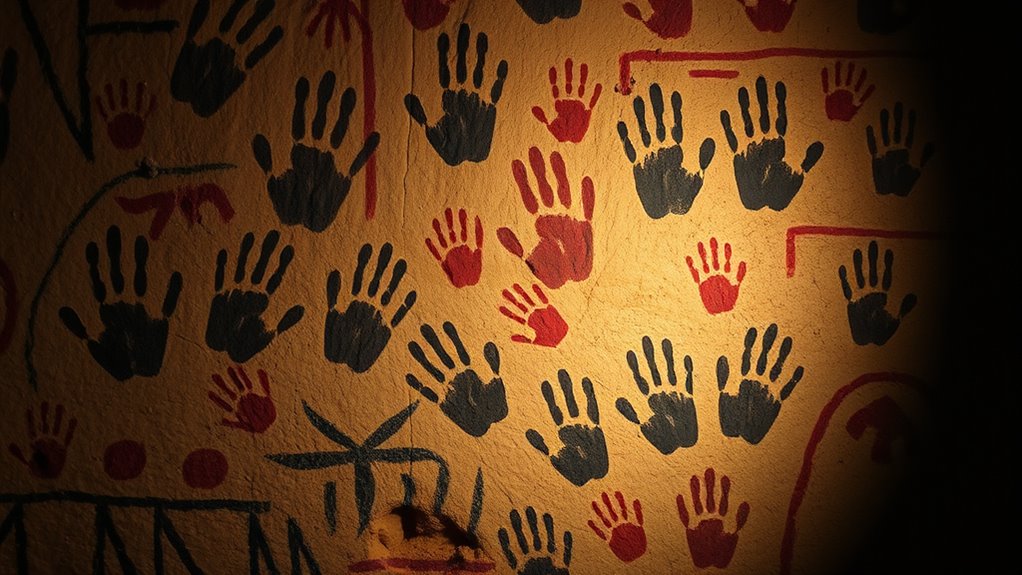
Natural resources played an essential role in shaping prehistoric art, as early artists relied directly on their environment to create vibrant pigments. Pigment sourcing was a pivotal part of their resource utilization, guiding them to find colorful minerals, charcoal, and clay nearby. You’d notice that they carefully selected materials like red ochre, manganese, or charcoal because of their durability and brightness. These resources weren’t just random; they reflected an understanding of their surroundings and how to use what was available. By utilizing natural resources effectively, early artists could produce lasting images that conveyed meaning and tradition. The importance of resource utilization in prehistoric times highlights how closely art was connected to the environment, shaping the development of early human culture and visual expression. Additionally, the use of natural resources for pigments demonstrates early humans’ awareness of material properties and their ability to adapt their environment for artistic purposes.
Insights Into Cultural and Artistic Evolution
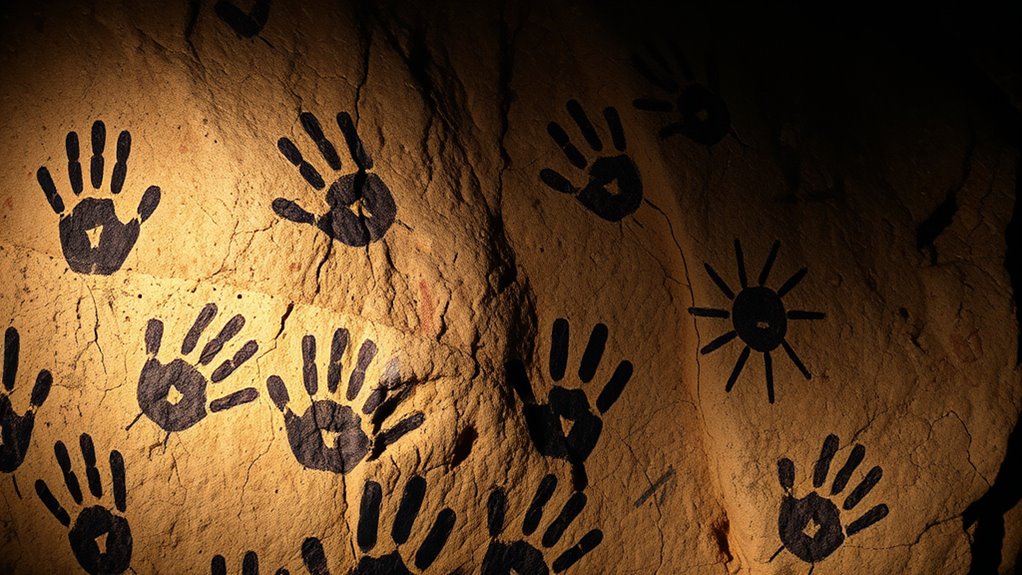
Cultural and artistic evolution reveal how early humans developed new techniques, themes, and symbols that reflected their changing societies. You see this through the progression of symbolic expression and artistic symbolism in cave art. As societies grew more complex, so did their art, conveying stories, beliefs, and social structures. The techniques used in cave art also evolved, incorporating new methods and materials that enhanced their symbolic messaging. These developments show how early humans used art as a form of communication and cultural identity. Their evolving techniques and themes highlight a deepening understanding of symbolic expression, laying the foundation for future artistic innovation.
Frequently Asked Questions
How Did Early Humans Develop Their Understanding of Color Mixing?
You might wonder how early humans developed their understanding of color mixing. They likely observed natural pigment sources like minerals and plant dyes, experimenting with different combinations. Through trial and error, they gained insights into color theory, discovering how to create new hues and shades. This hands-on exploration allowed them to refine their techniques for applying pigments, laying the foundation for the sophisticated cave art techniques we see in ancient times.
Were There Regional Differences in Ancient Cave Painting Techniques?
Imagine walking through a gallery where each room tells a different story. You’d notice regional stylistic distinctions in cave paintings, like unique brush strokes and motifs. These differences reflect geographic pigment sourcing, where communities used local minerals, creating distinct color palettes. So, yes, early humans adapted their techniques based on their environment, giving each region its own artistic fingerprint that reveals a rich tapestry of cultural diversity.
What Tools Were Used to Apply Pigments in Prehistoric Times?
You use natural pigment sources like charcoal, ochre, and minerals to create pigments. To apply these, prehistoric artists relied on simple pigment application tools such as brushes made from animal hair or plant fibers, fingers, and even blowing pigment through hollow bones or reeds. These tools allowed them to carefully paint and deposit pigment onto cave walls, showcasing their artistry and resourcefulness in using available materials.
How Did Environmental Factors Influence Pigment Preservation?
Imagine your favorite painting fading over time—that’s natural pigment degradation. You see, climate impact plays a huge role; humidity, temperature changes, and water seepage can erode pigment layers, making preservation difficult. These environmental factors accelerate natural degradation, transforming vibrant cave art into faint memories. You must understand how climate influences preservation, because it’s key to protecting ancient artworks from fading into history’s shadows.
Can Ancient Pigments Be Linked to Specific Cultural Beliefs?
You can link ancient pigments to specific cultural beliefs because they often held symbolic significance, reflecting spiritual or social values. These pigments were used in ritual practices, serving as tools to communicate with deities or ancestors. By analyzing the pigments’ composition and placement, you gain insights into the cultural context, revealing the importance of art in rituals and the symbolic meanings attributed to certain colors or materials.
Conclusion
Now that you’ve uncovered the secrets of ancient pigments, it’s clear that early cave artists truly knew their stuff. Their use of natural resources and innovative techniques speak volumes about their creativity and adaptability. You see, understanding these old methods sheds light on humanity’s artistic roots—don’t miss the forest for the trees. By appreciating their ingenuity, you gain a deeper connection to our shared history and the timeless quest to express ourselves through art.

